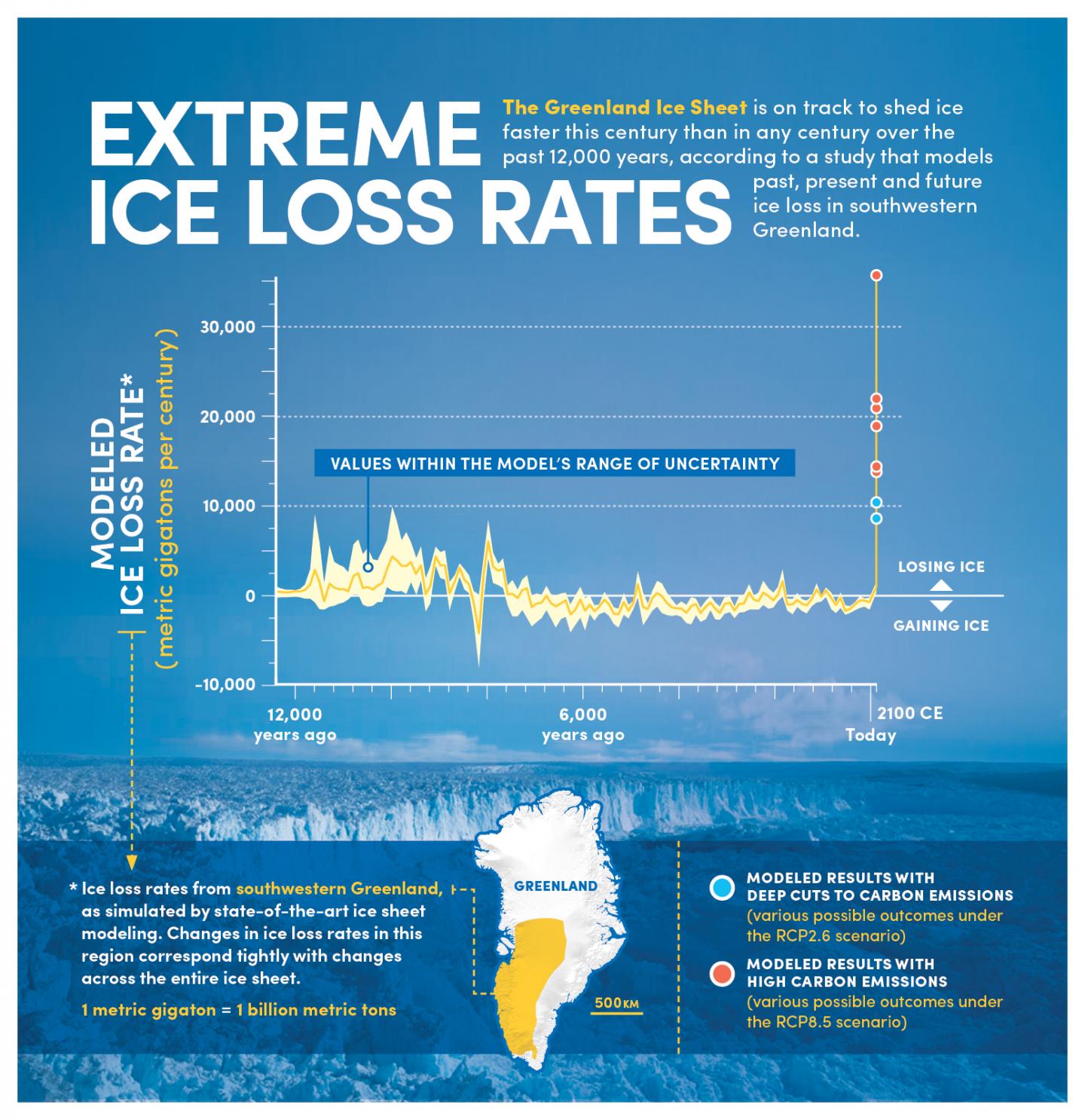A new estimate using sheet modeling finds that Greenland's rate of ice loss this century could outpace that of any century over the past 12,000 years, when the last Ice Age ended.
Scientists used reconstructions of ancient climate to drive the model, and validated the model against real-world measurements of the ice sheet's contemporary and ancient size.
The study brought together climate modelers, ice core scientists, remote sensing experts and paleoclimate researchers. The team used an ice sheet model to simulate changes to the southwestern sector of the Greenland Ice Sheet, starting from the beginning of the Holocene epoch 12,000 years ago and extending forward 80 years to 2100. Data came from ice cores to create maps of temperatures and precipitation in the study region that were used to drive the ice sheet model simulations up to the year 1850 while other published climate data were used to drive the simulations after that date.

Scientists tested the model's accuracy by comparing results of the model's simulations to historical measurements. The modeled results matched up well with data tied to actual measurements of the ice sheet made by satellites and aerial surveys in recent decades, and with field work identifying the ice sheet's ancient boundaries.
"We built an extremely detailed geologic history of how the margin of the southwestern Greenland Ice Sheet moved through time by measuring beryllium-10 in boulders that sit on moraines," says co-author Nicolás Young, PhD, associate research professor at LDEO. "Moraines are large piles of debris that you can find on the landscape that mark the former edge of an ice sheet or glacier. A beryllium-10 measurement tells you how long that boulder and moraine have been sitting there, and therefore tells you when the ice sheet was at that exact spot and deposited that boulder. Amazingly, the model reproduced the geologic reconstruction really well. This gave us confidence that the ice sheet model was performing well and giving us meaningful results. You can model anything you want and your model will always spit out an answer, but we need some way to determine if the model is doing a good job."
Though the project focused on southwestern Greenland, research shows that changes in the rates of ice loss there tend to correspond tightly with changes across the entire ice sheet.